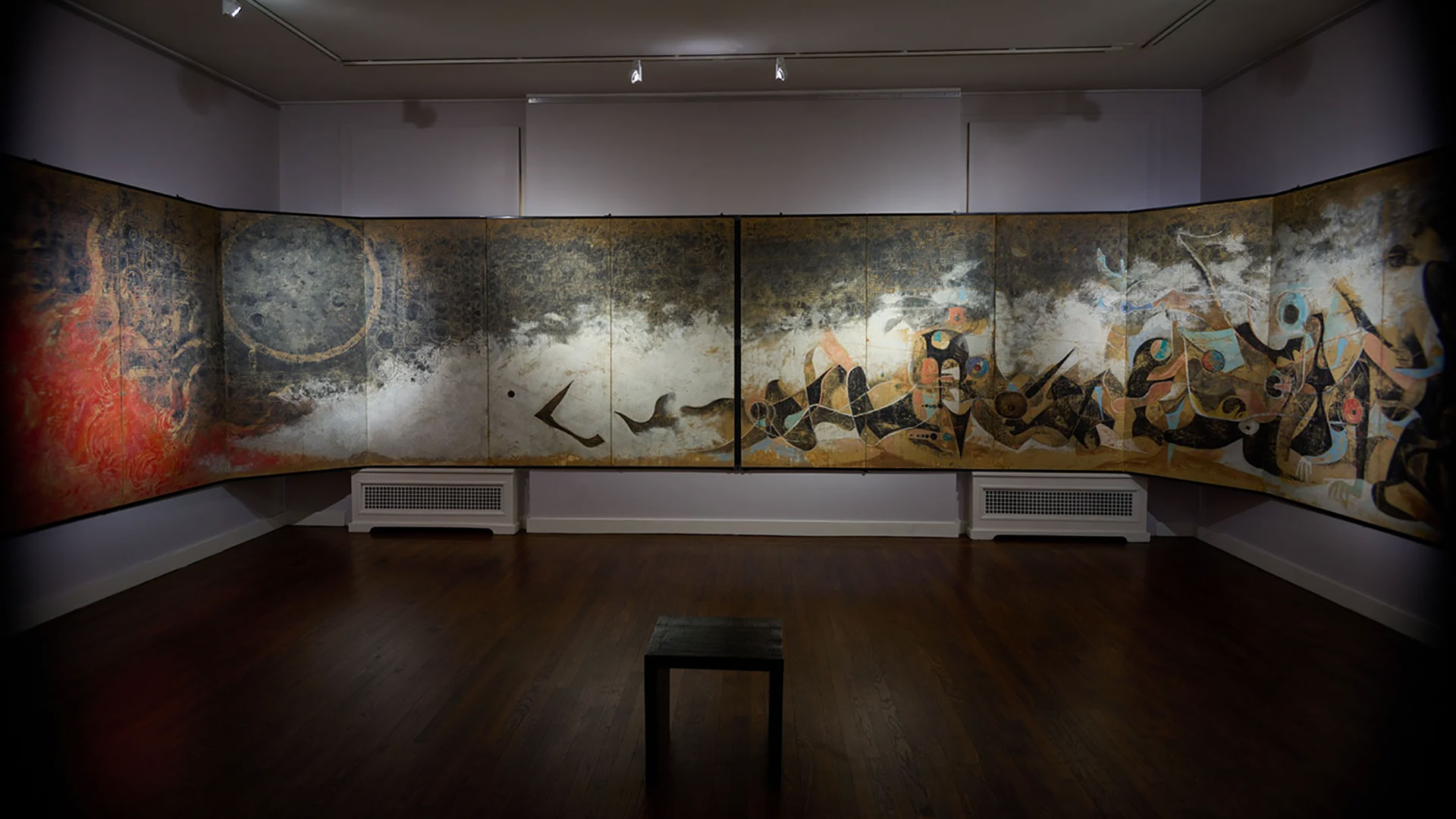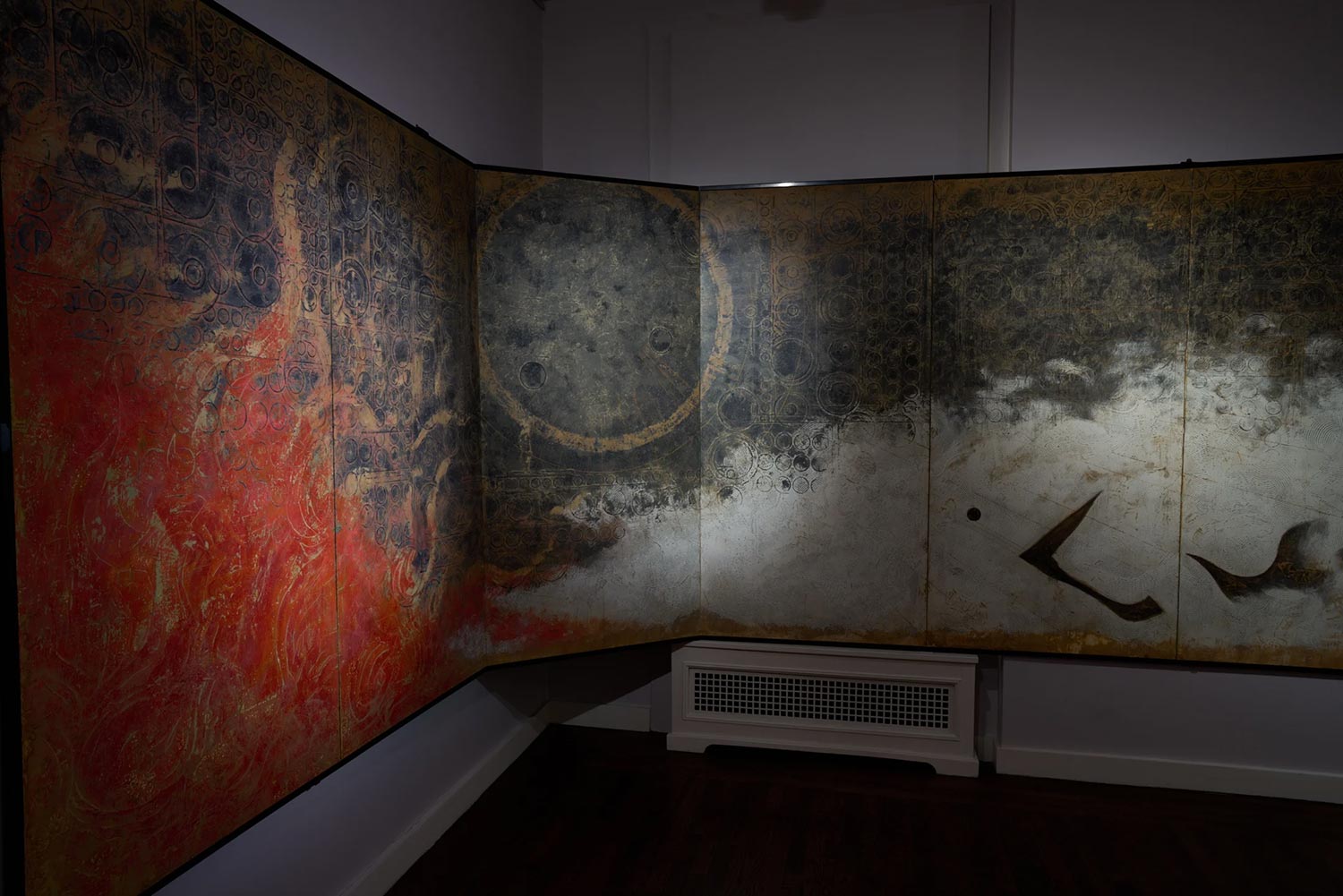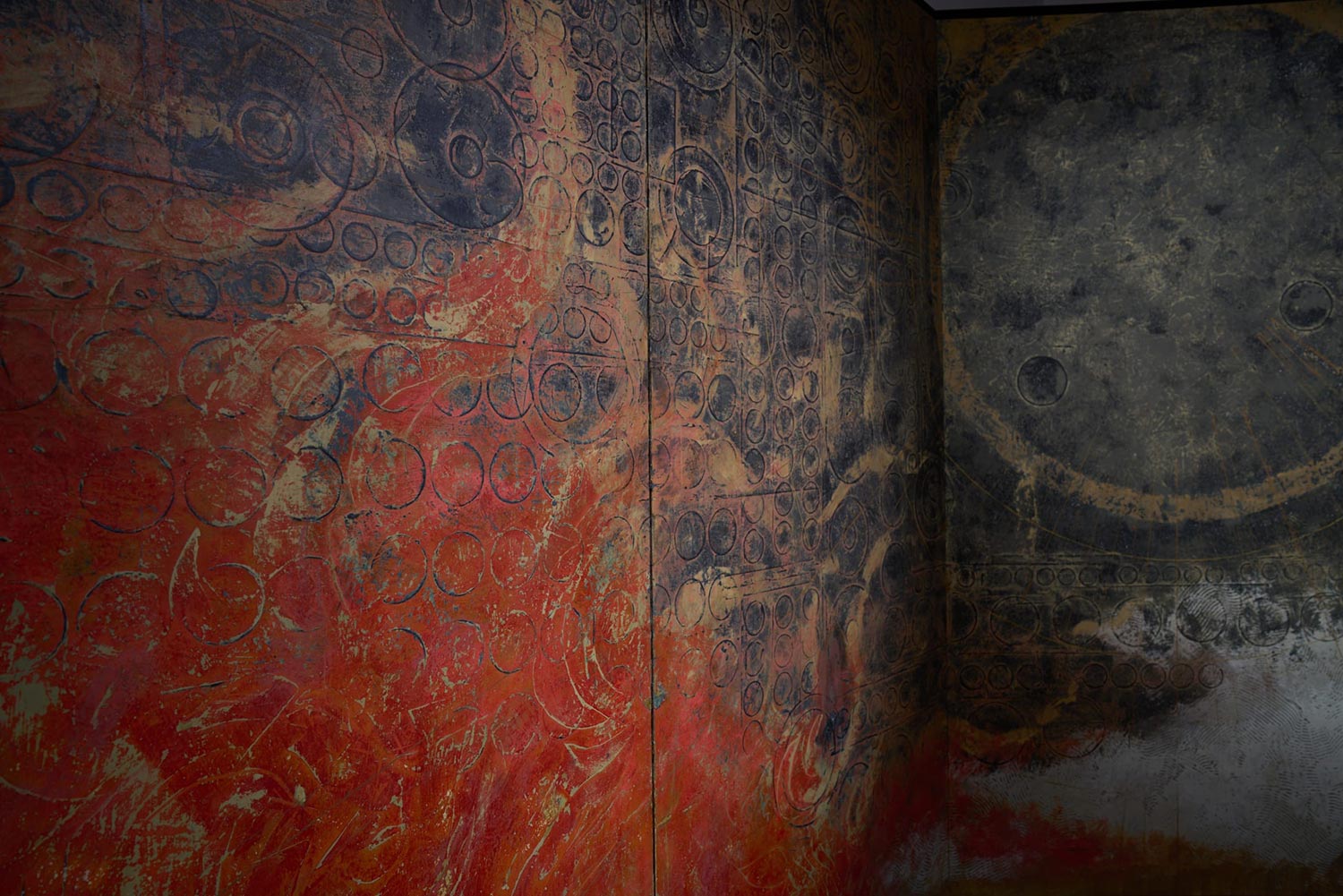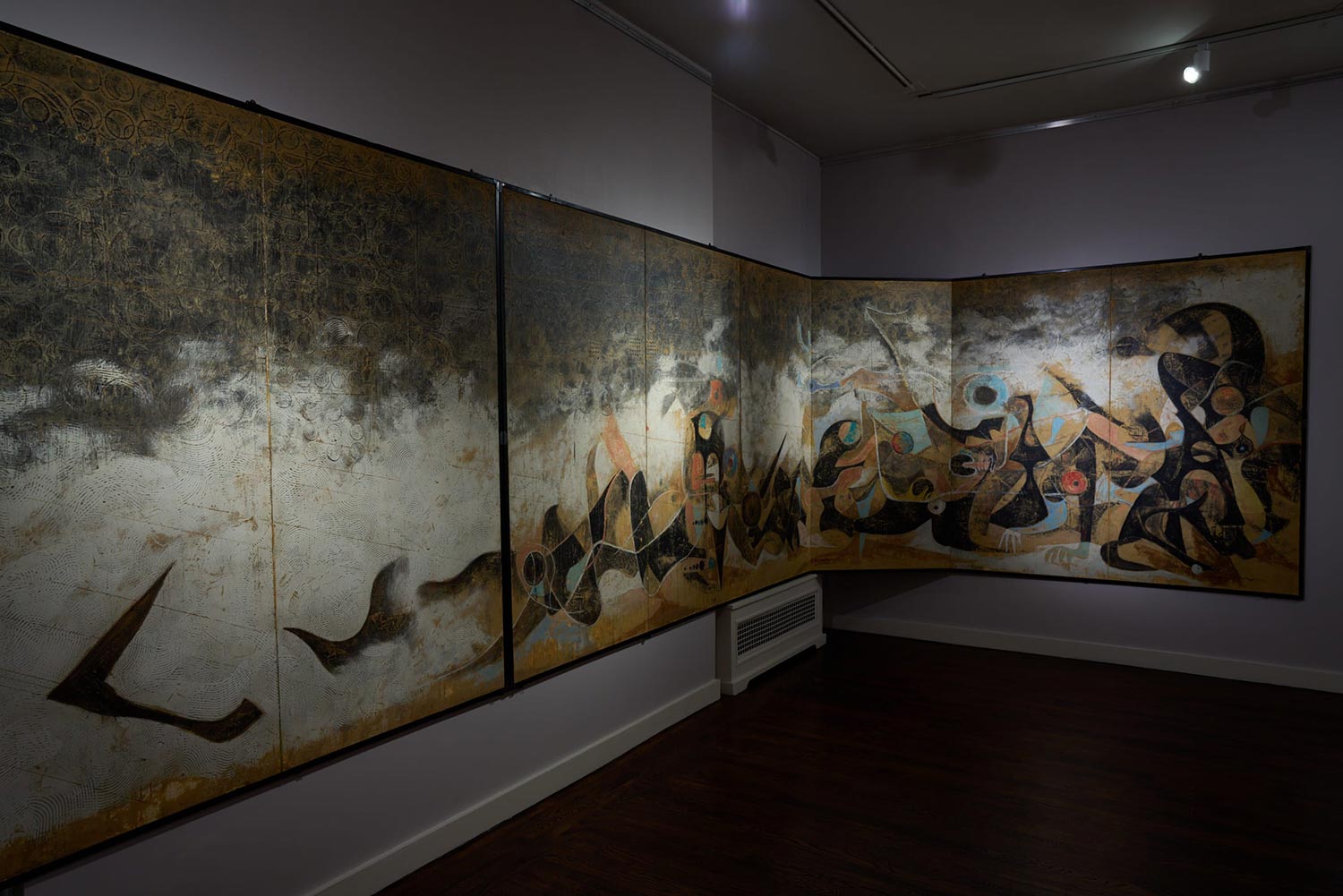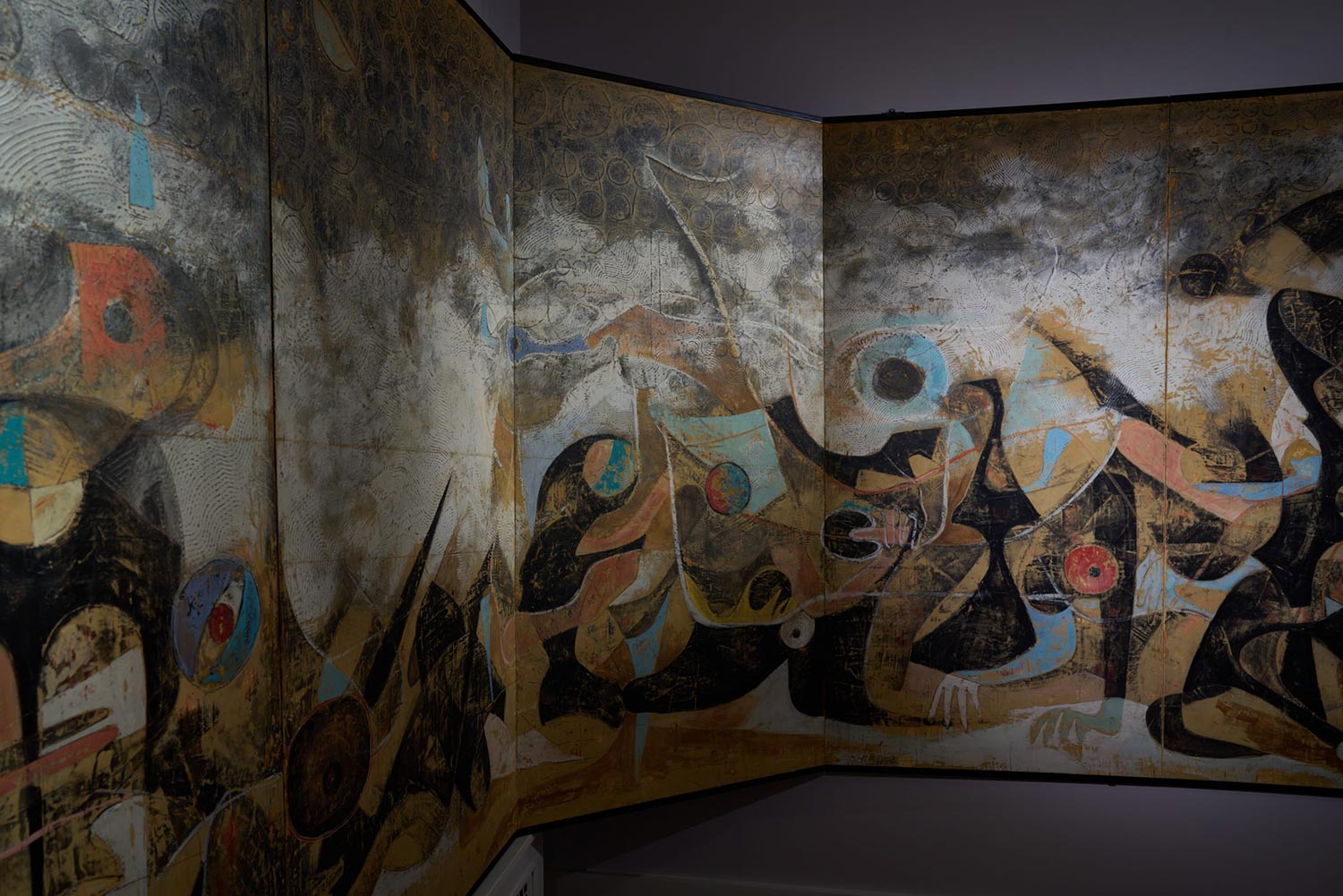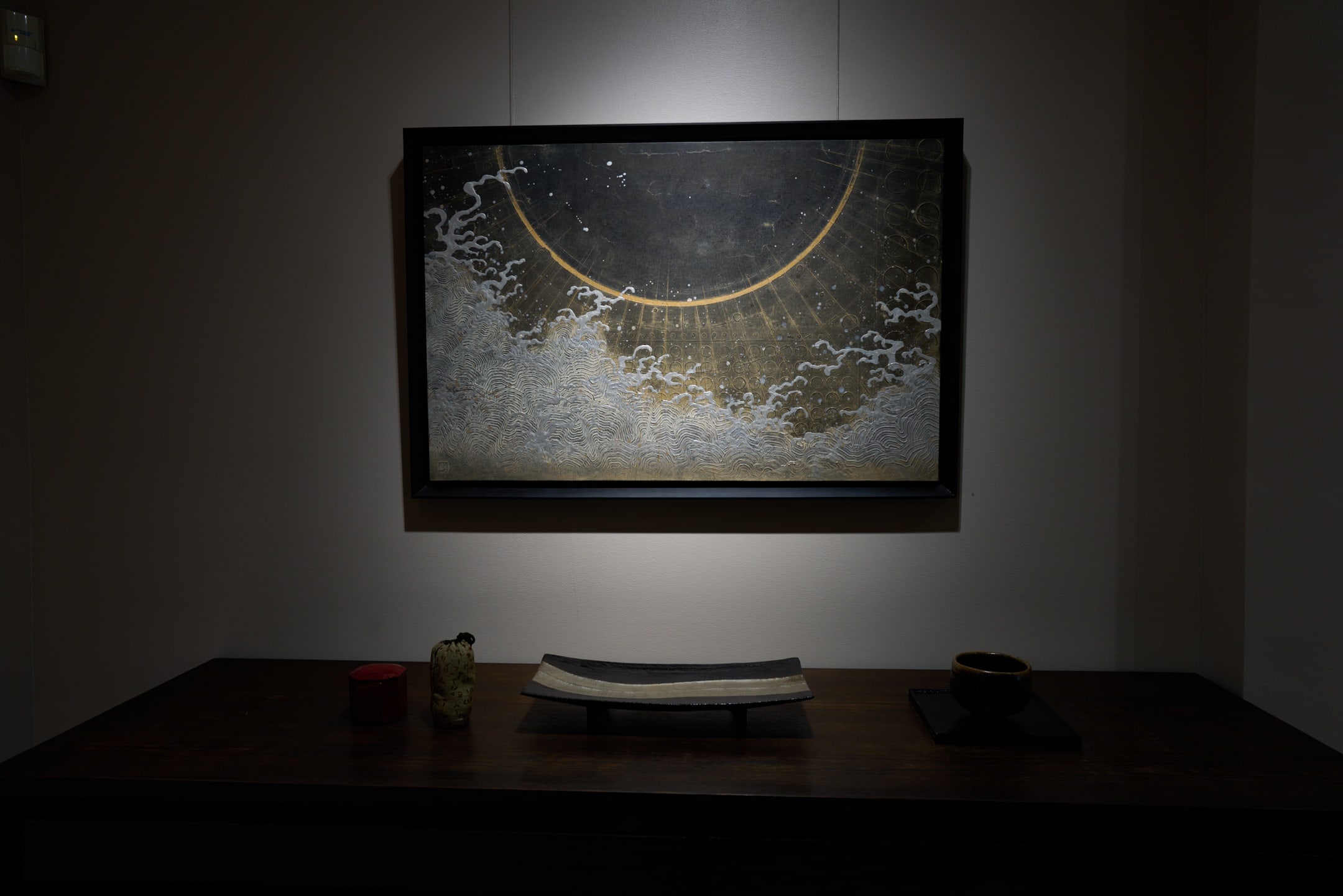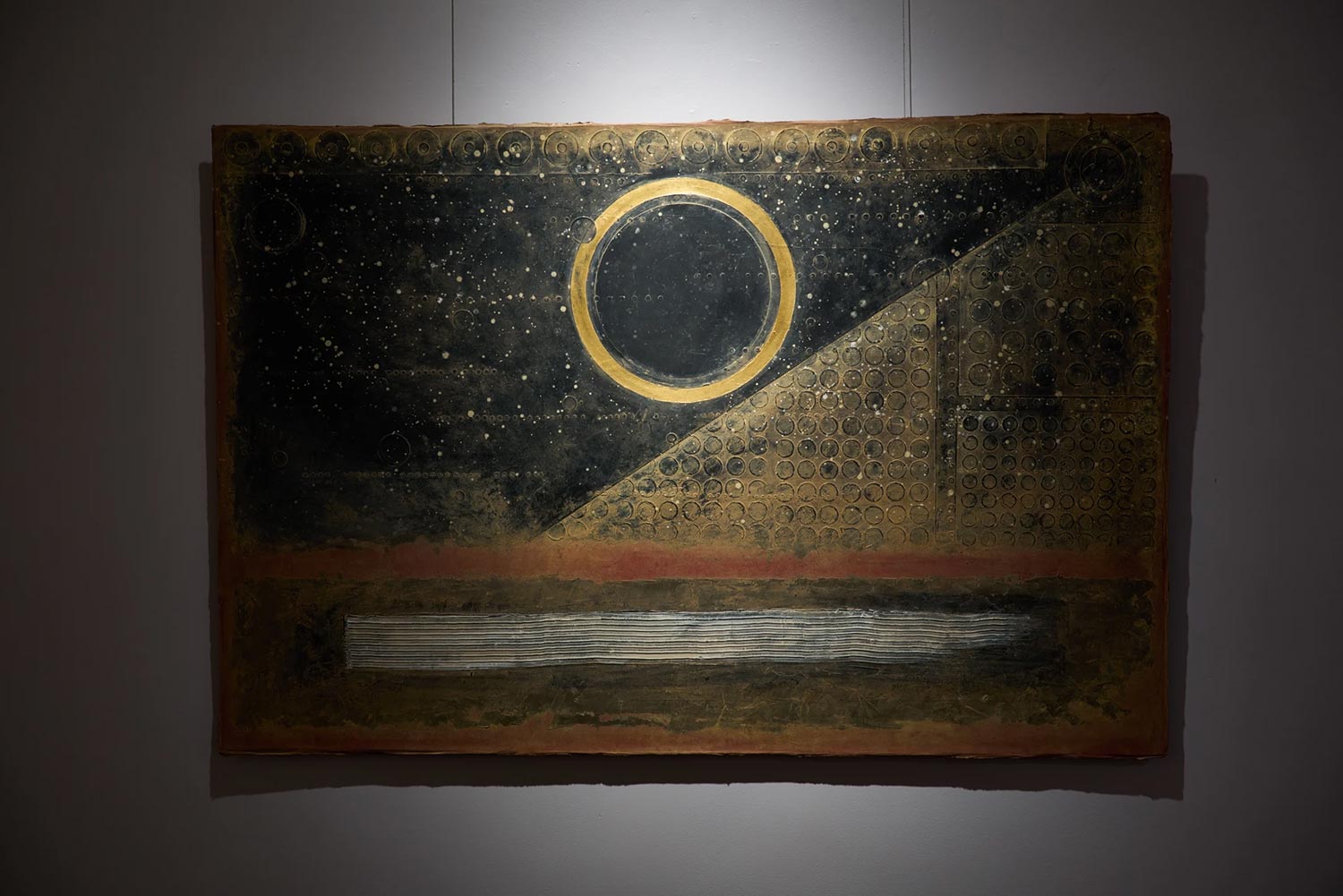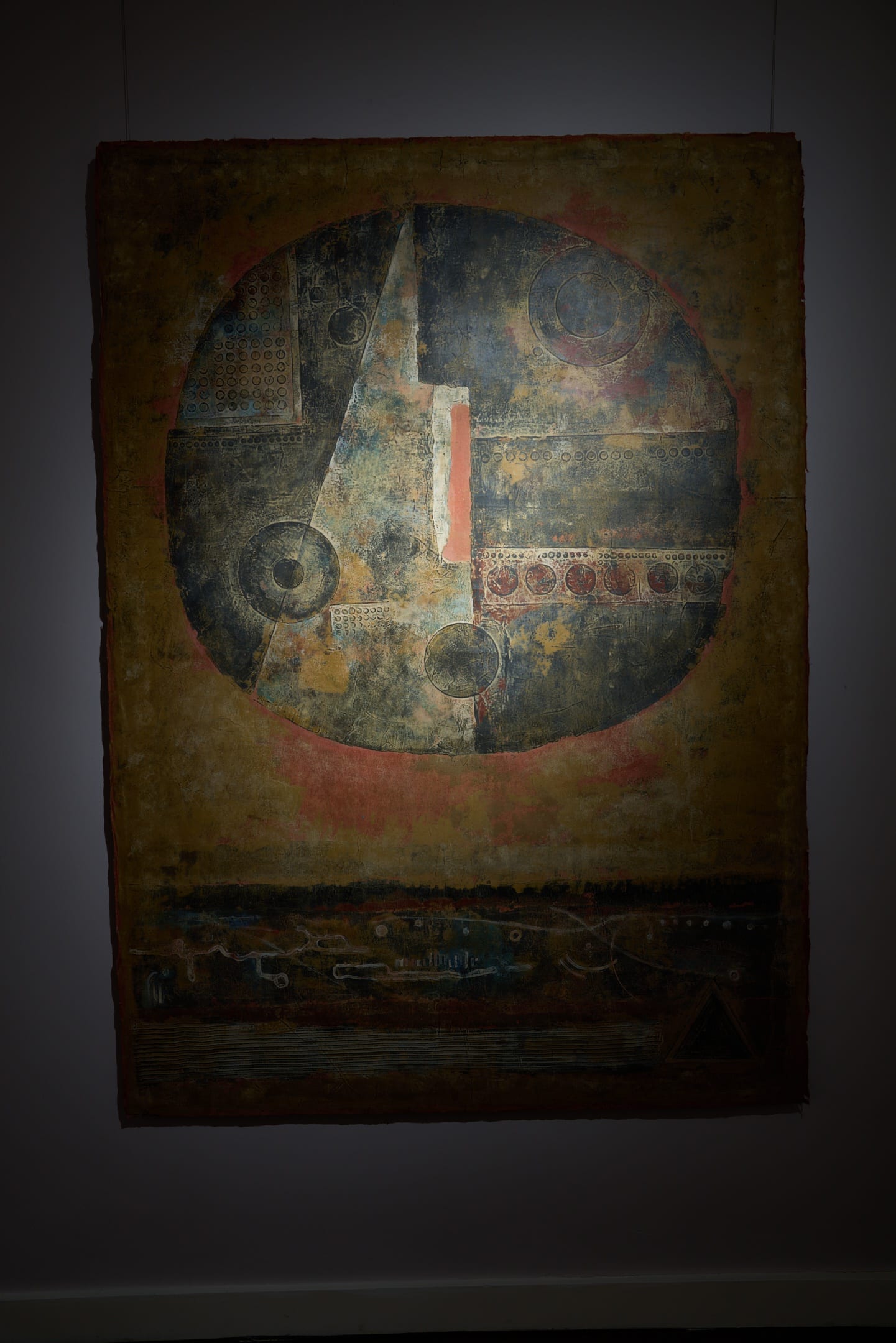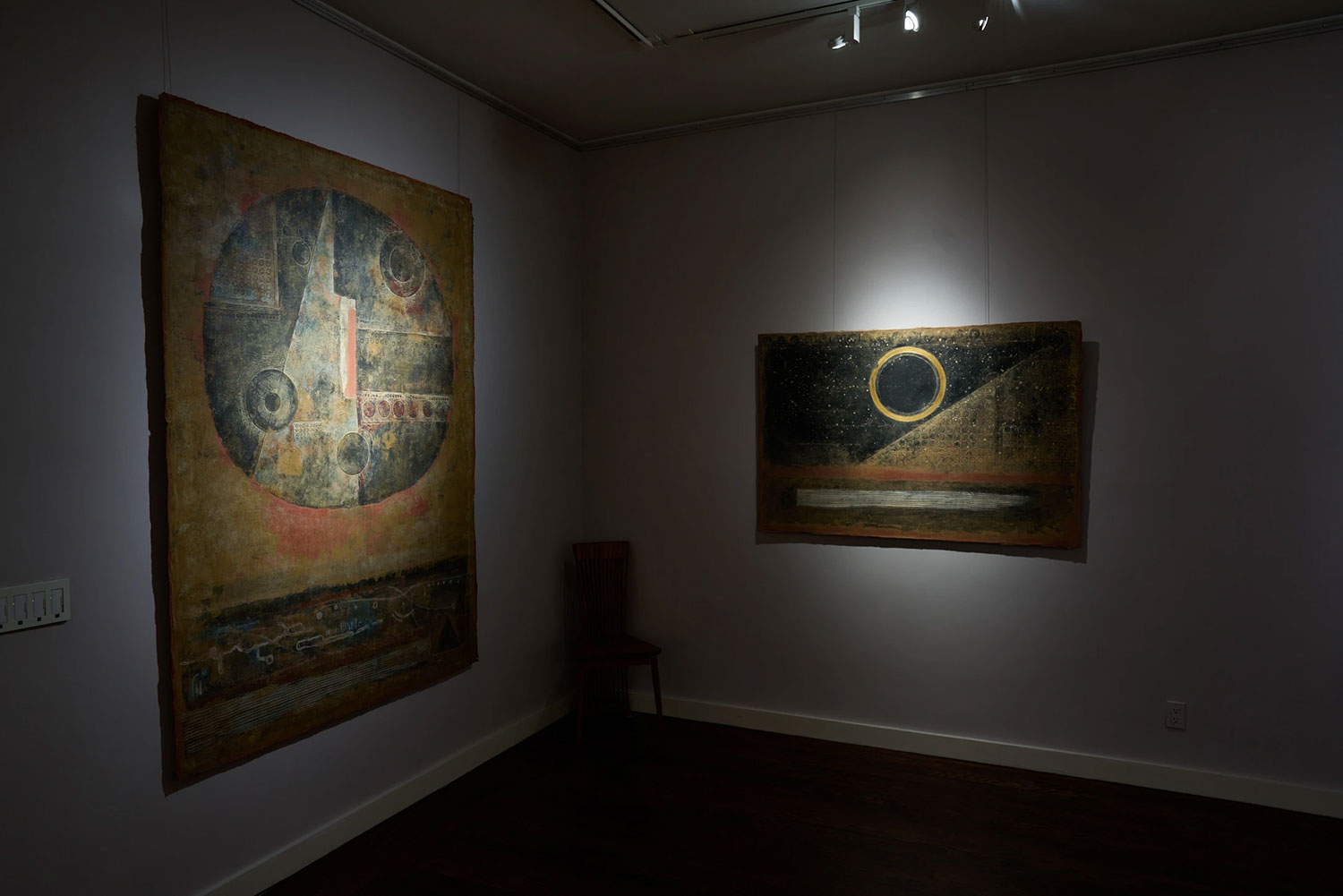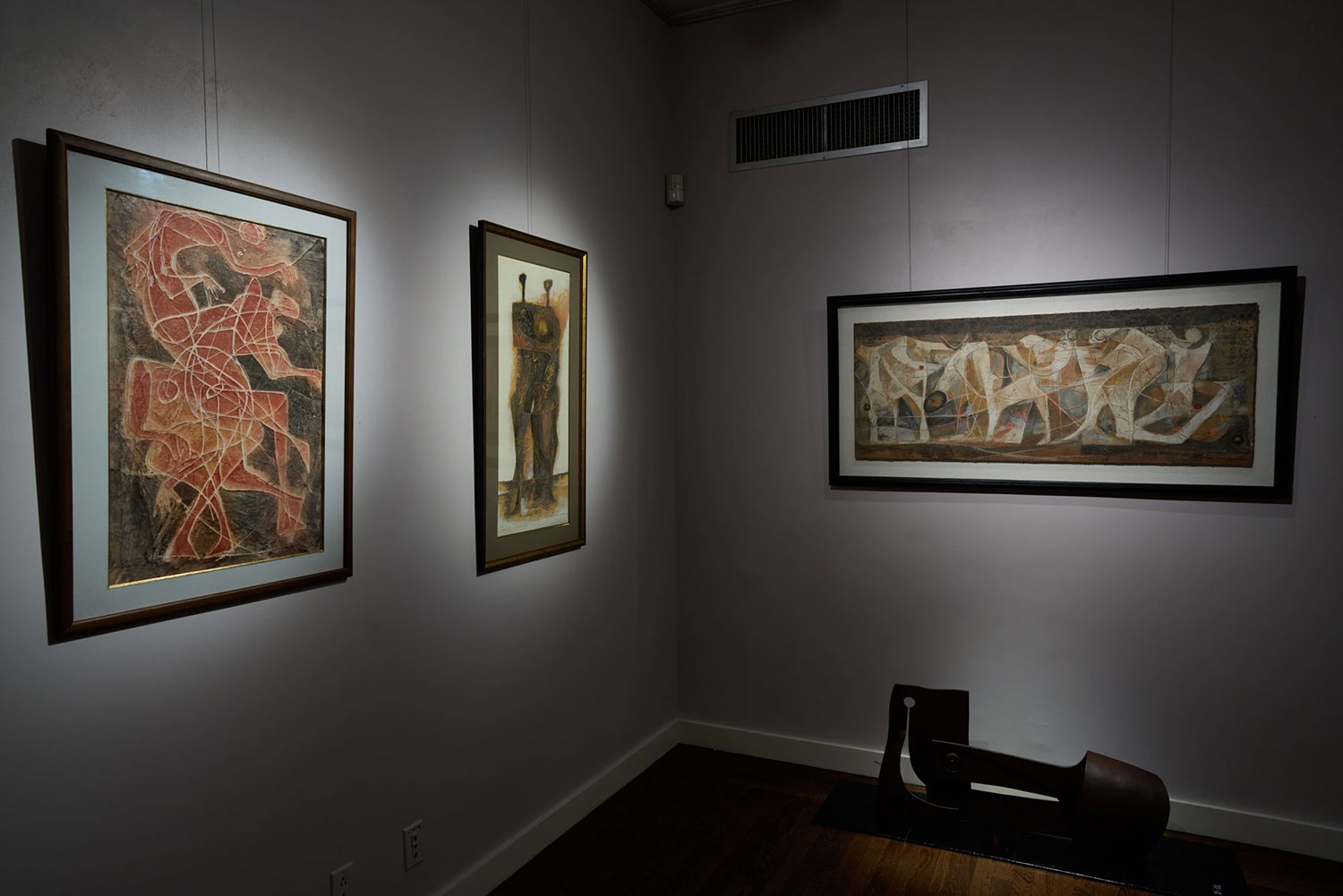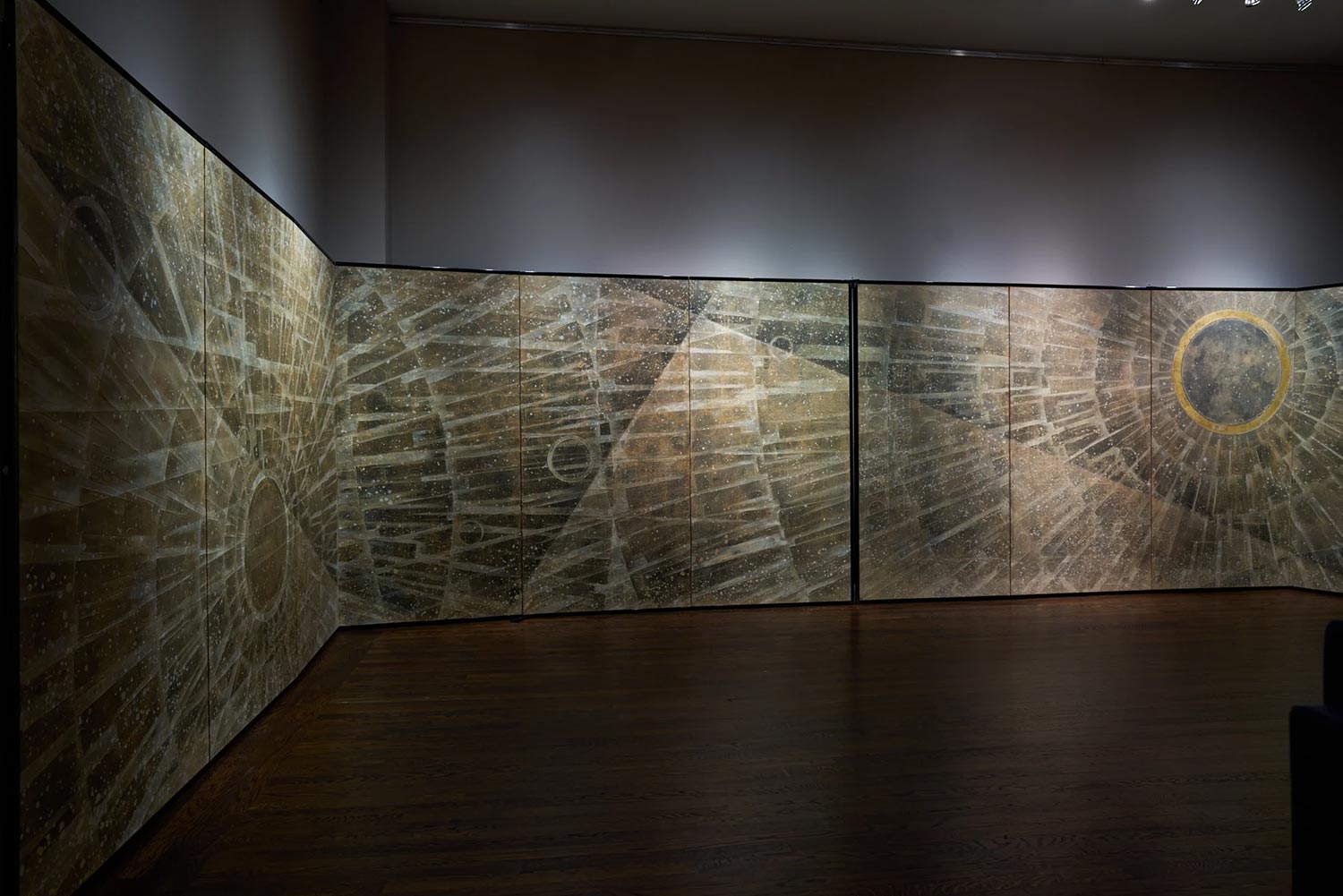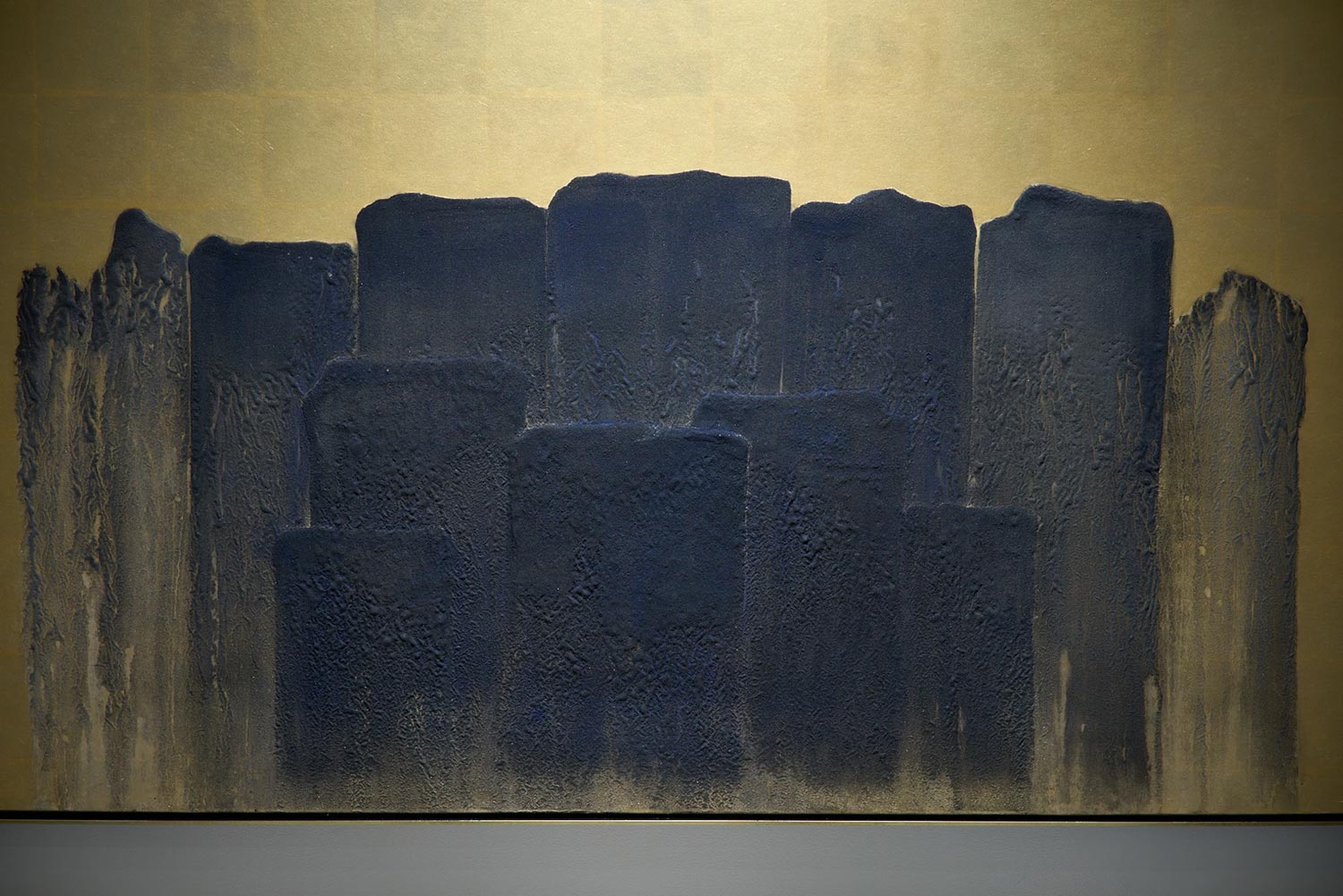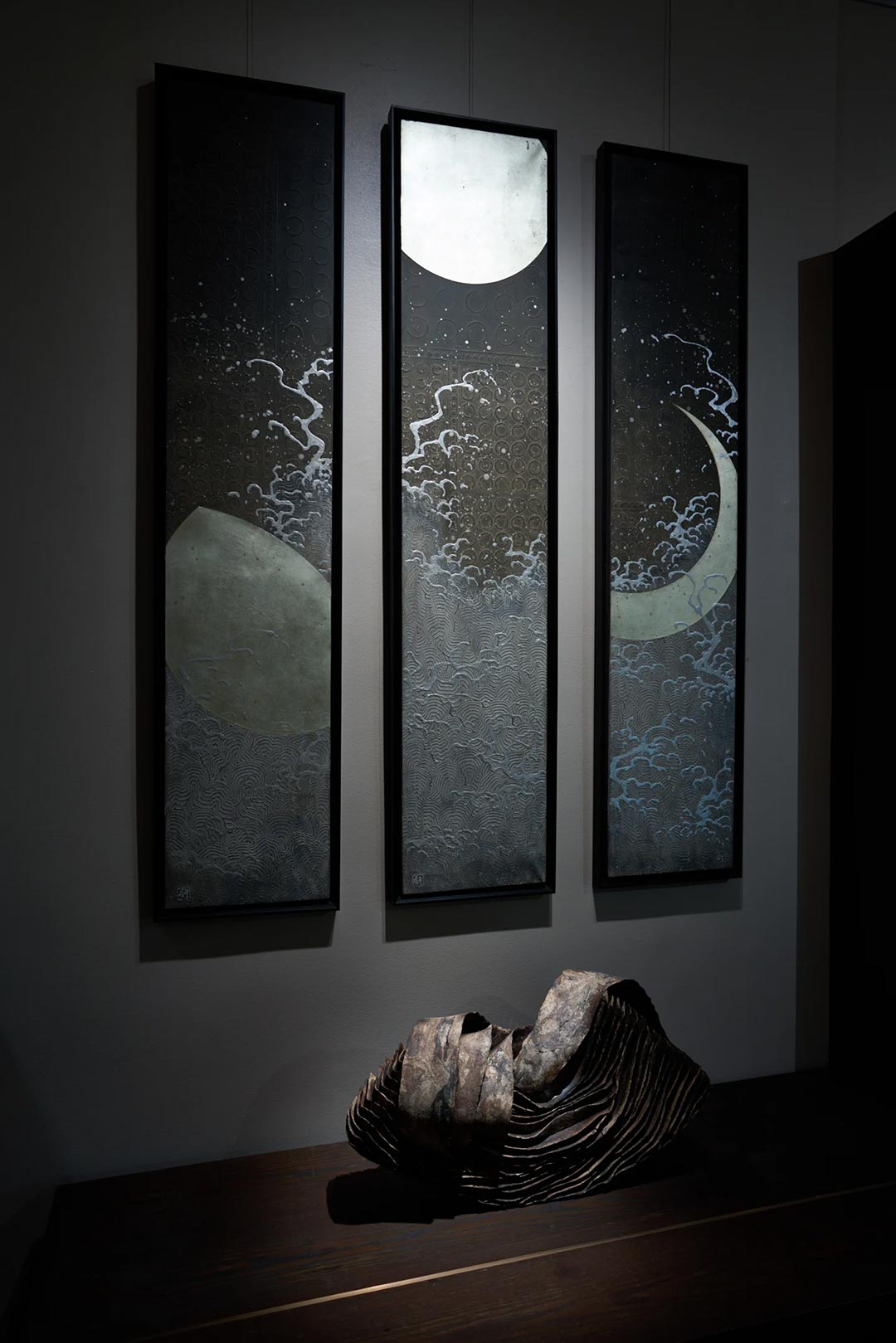Ippodo Gallery is pleased to present Chaos to the Cosmos: paintings by Ken Matsubara, in conjunction with Asia Week New York 2022. The exhibition is more than a retrospective; it is a culmination of four decades of artistic exploration and personal reflection. Starting with the artist’s earliest years, the result is a daring showcase that delves into the deepest corners of spirit and self, honouring the individual experience as much as the philosophical journey to serenity.
From his earliest works, the artist hovers on an aesthetic and interpersonal precipice, consciously or unconsciously awaiting his spiritual awakening. The youngest in a family of five sons, Matsubara’s unanswered questions and humble origins led him to spend hours of reflection at the local Buddhist temple, where he found solace in its sounds and philosophies. From the temple echoes to the teachings of the monks who surrounded him, Matsubara developed a foundation, a grounding, in the beauty of nature.
At just nine years old, Matsubara was inspired by a scroll at the temple (now at the Nara National Museum) depicting the Niga Byakudo-zu—The White Path to Paradise Between Two Rivers of Worldly Vice.
The righthand river was full of flames and beasts representing life’s darkest desires, while the left raged with turbulent waters. On the eastern bank, the voice of the Sakyamuni Shaka Nyorai says, “Go,” while the Amida Buddha on the western bank says, “Come.” In the middle was always the white path to serenity, where one must choose to walk the narrow white line to enlightenment.
“Only through Buddha’s guidance could one escape the sins and cross to the far bank,” Matsubara writes, “The chaos in their hearts being transformed into the harmony of cosmos.” In 1983, at 35, Matsbuara’s returned to these themes with Chaos, a staggering twelve panels at 1100 x 180 cm (433 x 70.86 in). When Matsubara began to paint, snake-like veins of flames and spraying water fought the battle of Matsubara’s internal demons until he finally broke free and achieved the true mental harmony to which he has always aspired.
The inflexion point of Chaos was marked by the passing of Matsubara’s teacher, Sanko Inoue, in 1981. Matsubara had only begun apprenticing at 27, in 1975, but was deeply inspired by Inoue’s evocation of impressionist and abstract masters from the West, particularly the influence of Guernica by Pablo Picasso.
Inoue encouraged Matsubara to prioritize wellness for his creative process, once saying to his apprentice, “If you are not ordinarily healthy, you will never be truly moved.”
The universality of both internal and external conflict has been communicated through scrolls since the times of ancient Buddhist priests but holds a timeless message of integrity and strength in the 21st century. During these COVID-19-ridden years, the gentle sounds of nature hold the power to unify and protect us from Chaos, and to remind us to keep well. Matsubara himself always paints outdoors, regardless of the weather, charged by the colours of daylight. He uses materials from the honoured mountains, coloured earth, and flowing rainwater to bring nature to life for the later works on view.
With the Sound series begun in 1981, Matsubara visited his brother’s temple in Imajo, Fukui prefecture, and began working with the circle motif, marvelling at its cyclical perfection. The series’s namesake draws from the mesmerizing sound he first heard in the temple, which continues to guide the work today just as it has for close to three decades. The significance of the sound presented with the circle motif is that Matsubara draws circle motifs in the background of almost all paintings.
After a fruitful meeting with Japanese ceramic historian and great teacher Seizo Hayashiya when Matsubara was a seasoned master of 62, the Matsubara designed and painted Sound artworks in Hayashiya’s tearoom. The circle is also present in the Kukai series. Matsubara recalls the journey of a Japanese monk (the priestly name is also Kobo or Koyo Daishi) who retreated into the caves of Muroto Cape at the Southeastern tip of Shikoku, exiting to behold the breathtaking sun and moon rising in the same place every day against a rocky ocean horizon and a starry sky.
Struck by the majesty of their permanence, the monk later named himself ‘Kukai’ (774 – 835), for the ‘air (Ku) and ‘sea’ (Kai), completely synonymous with his excursions into nature. His story resonates so much with Matsubara that the artist even revisited Kukai’s exact spot to experience the same sensation. The Kukai series in Ippodo’s exhibition honours sound as it represents eternity, the perfect order of the cycles. As the silver light of the moon shimmers through the darkness, waxing and waning with the sun, so too does the heart and its desires.
Matsubara’s retrospective is a great affirmation of life. Because as preoccupied as he is with the greater expanse of nature, so too is he concerned with the works’ relationship to the viewer. When encountering these otherworldly manifestations, viewers should come to realize our truths, our paths, and our spiritual journeys. They should awaken our memories and echo in our souls, reminding us that nature is in perfect order no matter how chaotic our world may appear. And like the turbulent rivers of Chaos, like ourselves, like the virus we fight, nature is constantly changing.
Read more +
Read less -







 Sign in with email
Sign in with email


